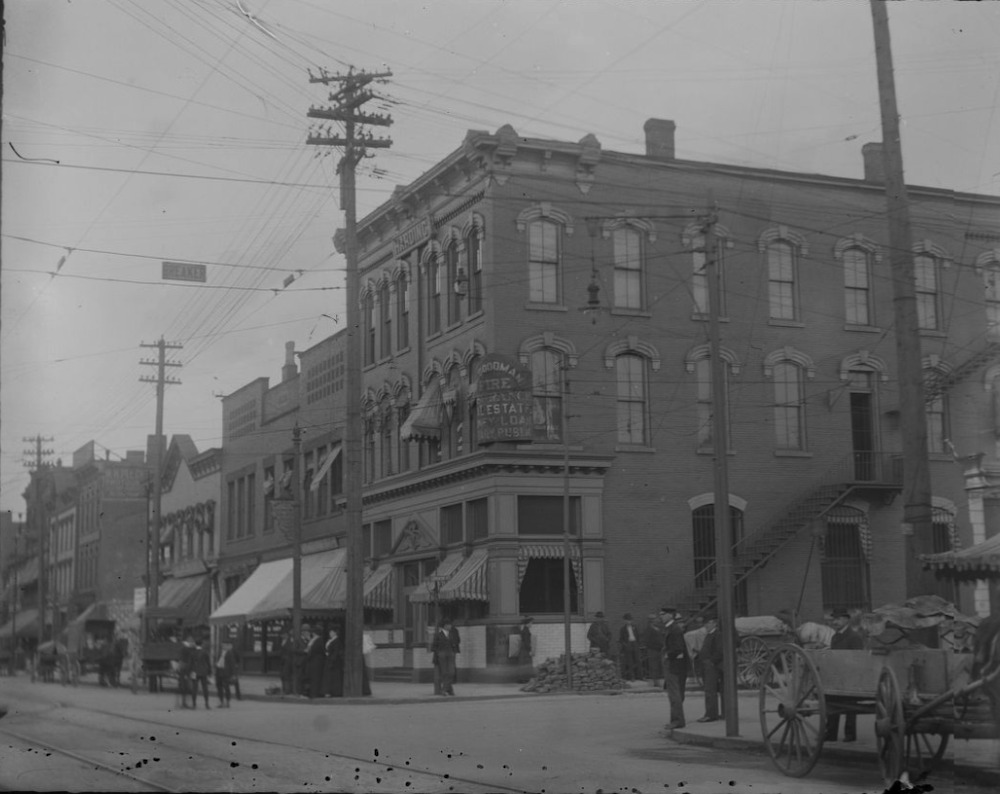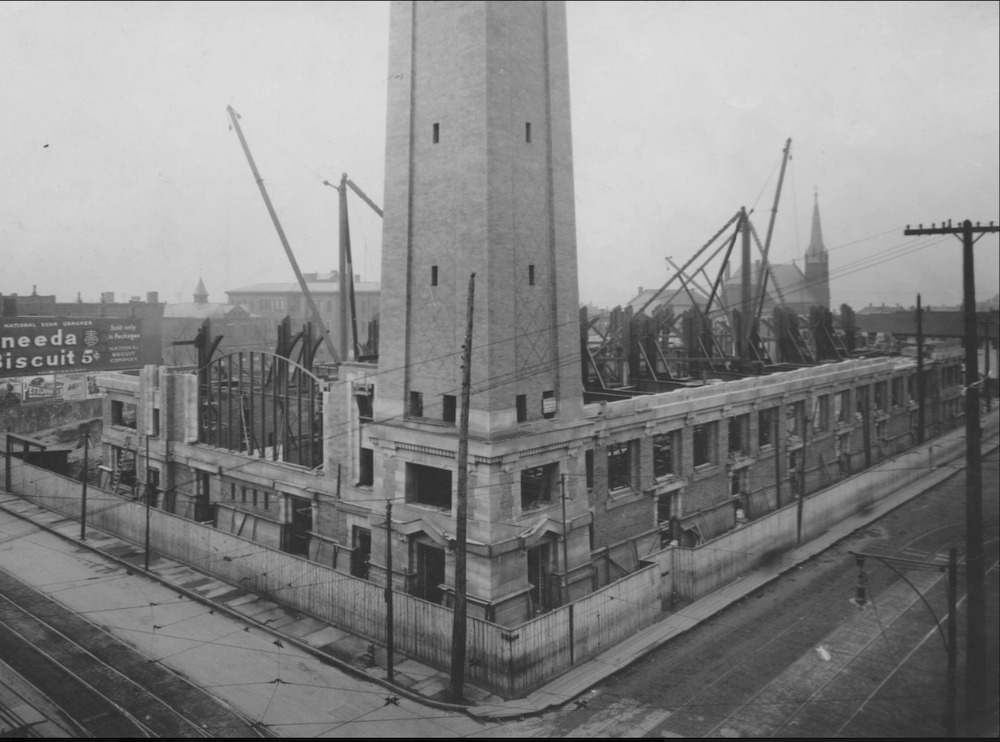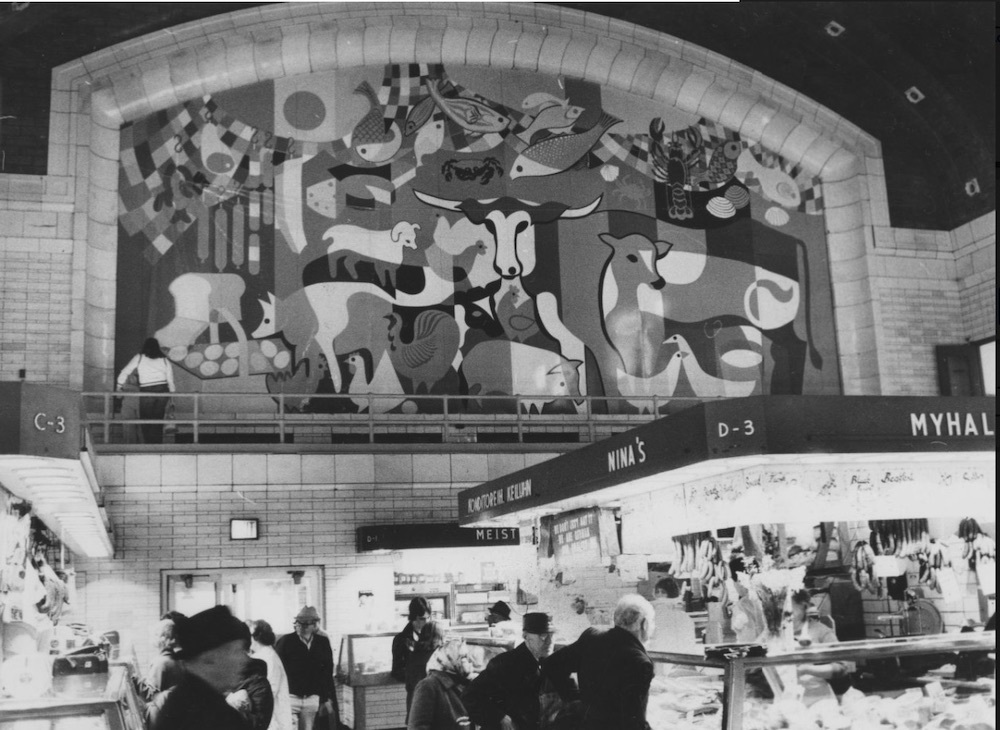
Cleveland's West Side Market has a longer and more interesting history than you might imagine. In 1854, when Cleveland annexed the city west of the Cuyahoga River known as the City of Ohio or Ohio City, the new territory became known as Cleveland's West Side. There was an open air public market on this new West Side located at Franklin Place (Franklin Circle). That market soon began to be commonly referred to as the "West Side Market," perhaps to distinguish it from a public market located near Public Square known as the Michigan Street Market. Just one year later, in 1855, Cleveland undertook to move this West Side Market to a new location so that it could build at Franklin Place the West Side's first public park. As a result, the West Side Market was temporarily moved to a site north of Franklin Circle, but, in 1859, permanently moved to the northwest corner of Pearl (West 25th) Street and Lorain Avenue, where land had been set aside many years earlier by pioneer Ohio City developers Josiah Barber and Richard Lord for a public square. There, the West Side Market continued to operate, first, as an open-air public market, and then for several years within a very small building, until 1868 when the City of Cleveland built on the land a large one-story wooden market house that it named the Pearl Street Market.
By the mid-1890s, the City's Pearl Street Market, according to an article appearing in the Plain Dealer on May 10, 1895, was in a dilapidated condition, looked more like a barn than the market house of a prosperous city, and was so overcrowded on the days that it was open that lines of shoppers waiting to get in often stretched several blocks down Lorain Avenue and almost all the way down Pearl to Franklin Boulevard. The Western Improvement Association (WIA), an organization of West Side business owners, addressed the matter in 1897 and formally petitioned Cleveland to tear down the old market house and build a larger one on the site. The WIA even managed to secure legislation from the State of Ohio authorizing the City to issue bonds to finance its construction. Robert McKinnon and John Farley, however, who served as Cleveland's mayors during the period 1897-1900, were slow to act on the project and it languished on the drawing boards during their administrations. The election of legendary Cleveland mayor Tom L. Johnson in 1901 changed that and brought a renewed interest in the West Side Market House project.
Mayor Johnson initially planned to build the new West Side Market house on the same corner of Pearl and Lorain upon which the Pearl Street Market stood, but in 1902 decided instead to move it across the street to the northeast corner of those two streets, in large part because owners of some of the additional property required for the larger market house on the old site attempted to exact an exorbitant price for their land from the City. There were also lingering questions as to the City's clear title to the land on which the Pearl Street Market House stood. The project was then delayed for a period while Mayor Johnson and his appointed market commissioners engaged in a power squabble, which was then followed by litigation brought by retired Cleveland architect Frank Cudell who challenged the process by which the City had selected the architectural firm of Hubbell and Benes to design the new market house. Finally, in 1907, construction of the new West Side Market was begun. The project was plagued by more delays during construction, but, finally, after 14 years of planning and actual construction, the new West Side Market opened for business on November 2, 1912. Mayor Johnson, who had left office and had then died in 1911, never saw the opening of the new market house that he had devoted much of his time as mayor to site, plan and build.
Hubbell and Benes, the architects who designed the West Side Market, designed many other notable buildings in Cleveland, including the Cleveland Museum of Art and the Wade Memorial Chapel at Lake View Cemetery. The firm also designed the Central YMCA, the Citizens Building and the old Illuminating Building, all located in downtown Cleveland. Hubbell and Benes' design of the new West Side Market House has been called Neoclassical/Byzantine. The building, which is 241 feet long and 124 feet wide, is said to resemble a train station. Its clock tower, designed like a campanile (Italian bell tower), rises 137 feet above street level. The building has 144,000 square feet of interior space. The inside of its main concourse was designed to be occupied by 110 vendor stands clustered in quadrangle groupings. The concourse's vaulted ceiling stands 44 feet above the vendor stands. In 1914, two years after the new West Side Market opened, the City built the Produce Arcade on the north and east sides of the market house for vegetable and fruit vendors, and in the following year razed the old Pearl Street Market house. The new Produce Arcade had capacity for 126 stalls, giving the West Side Market a total capacity of 236 inside and outside stalls.
When the new West Side Market opened in 1912, there were two other public market houses operating in Cleveland--the Central Market (which in 1859 had replaced the Michigan Street Market and which was located near what is today the intersection of Bolivar and Ontario Streets), and the Broadway or Newburgh Market (built in 1879 at the intersection of Canton and Broadway Avenues in what is today Cleveland's Slavic Village). There also existed a number of private market houses that were regulated by the City, most notably the Sheriff Street Market, located just a block away from the Central Market. Over the course of the 110 years that the West Side Market has stood on the corner of Lorain and West 25th, those other markets have all gone out of existence leaving the West Side Market as Cleveland's last remaining historic public market.
Over the years, Cleveland has periodically renovated, rehabbed and restored the West Side Market and its fixtures, equipment and other accouterments. The first of these periodic improvements occurred in 1954 when the City installed new elevators, automatic refrigeration, new electrical wiring and new offices for staff. Also completed that year was a modernization of the vendor stands and installation of a new electric clock in the clock tower. (The original clock was wound manually every Monday by a city employee who had to climb a perilously narrow winding stairway up to the clock room to perform the task.) The Market underwent a second renovation in 1978-1979. This renovation included an extensive cleaning of the market house building, the covering of the large arched windows on the east and west ends of the market's concourse with aluminum panels, and the painting of murals over those panels. Lighting improvements were also made to this building, and the Produce Arcade was repainted and repaired. In 2001-2004, the City enclosed the vendor stands in the Produce Arcade. It also removed the murals and aluminum panels that since 1978-1979 had covered the concourse's large arched windows, thereby restoring the original natural lighting of that area. Decorative lighting was also added to the exterior of the building and trees were planted and other improvements made to the parking lot area.
While the West Site Market is a beautifully designed Cleveland landmark which has been well maintained by the City for more than a century, it is not its architecture alone which defines its beauty and importance to Clevelanders. For generations of them, the sights, the smells, and the sounds that a day at the Market brings are just as much of an attraction as the building itself. Over the years, especially since the beginning of the 21st century, the number of vendors who produce these memorable sights, smells and sounds has declined. According to newspaper reports, this has occurred for a number of reasons, including increases in vendor rent and decreases in public attendance. Today, fewer than one-third of the original stalls at the West Side Market remain occupied. This development prompted the City in 2021 to engage a consultant to undertake a study of how the historic landmark--a building that as recently as 2008 was lauded by the American Planning Association as one of America's great public places--may be revitalized. As of the writing of this story in 2022, new Cleveland mayor Justin Bibb, who supported the recommendations from that consultant's study, had successfully persuaded City Council to enact new legislation intended to implement a number of those recommendations. Hopefully, this legislation, and the anticipated passage of additional related legislation, will go a long way to revitalizing the West Side Market, so that future generations of Clevelanders may have the opportunity to enjoy its memorable sights, smells and sounds.
Video
Audio
Images


















